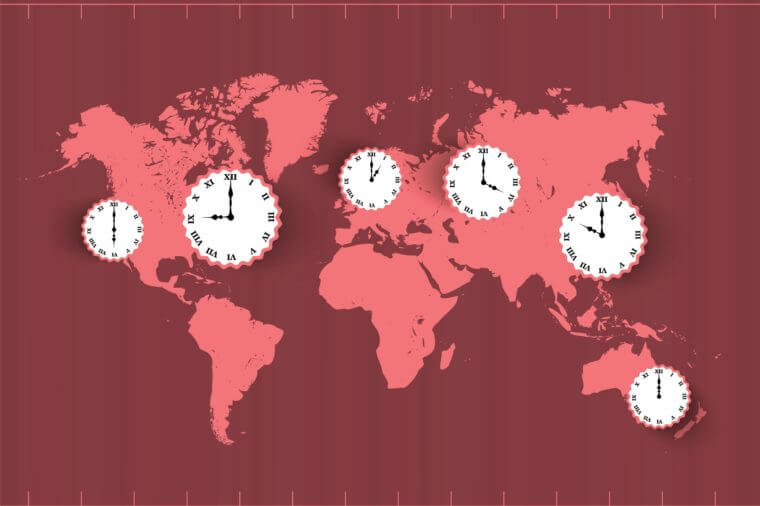Every traveler who has experienced the joys of jet lag has probably wondered at least once, “Why can’t the time be the same everywhere in the world?” (Here are some tricks for taking the edge off of jet lag.)
Alas, thanks to forces very much out of our control—namely, the rotation of the Earth—different parts of the globe experience sunlight and darkness, day and night, at different times. Try to imagine what it would be like if, despite that, the time was the same everywhere in the world. 12:00 AM would be the middle of the night in some parts of the world… but in other parts, people would be eating dinner at midnight, just waking up, taking their lunch break, et cetera. Not only would the name “midnight” be a misnomer for most of the world, but that would mean that the date would change in broad daylight, right in the middle of people’s days. Sounds like a big mess. The occasional confusion that comes with time differences is definitely the lesser of two evils in this situation!
And if you think keeping track of time differences is confusing, imagine what international travel would be like without time zones. You’ll be surprised to know that this time-zone-free world actually existed more recently than you might think.
Throughout most of history, different towns would keep track of the time themselves, without any kind of standardization. Clocks were set so that noontime corresponded with the sun’s highest point in the sky, which varied greatly by location. And for the most part, this system worked, since international travel was uncommon by today’s standards and not nearly as rapid. However, as travel—namely by train—became more widespread in the mid- to late-1800s, people began to see the need for a more universal system of timekeeping.
One of these people was a scientist and engineer named Sir Sandford Fleming. Rumor has it that he missed a train while traveling, because he was confused about its departure time, and had a stroke of genius. (That’s one way to make the best of a travel mishap.) In 1878, Fleming proposed that the 360 degrees of the globe be divided into 24 separate “zones” according to longitude. He suggested that adjacent zones be one hour apart. Fleming’s idea caught on, and six years later, world leaders met in Washington, D.C. to establish the standard time zones we know today. In 1918, a law took effect mandating the use of these zones in the United States.
Of course, things can never be that simple. Several countries complicate matters with variations on the standard time zones. Though China geographically spans five longitudinal time zones, the time is the same throughout the entire nation. Not to mention, several countries use half-hour and even 45-minute time zones (we’re looking at you, Nepal and Australia).













